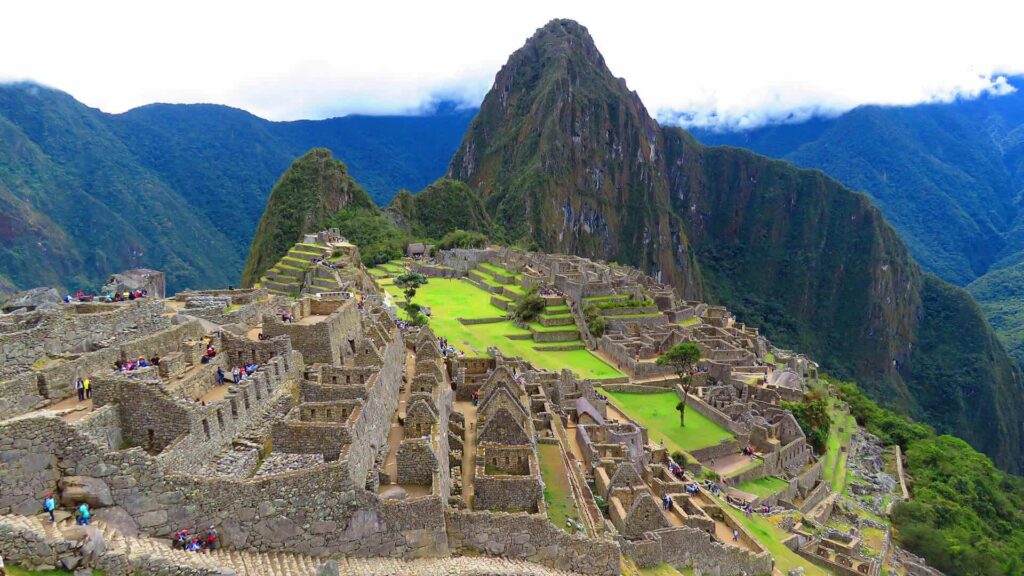Sri Harmandir Sahib, another name for the Golden Temple, is a stunning and famous landmark that can be found in Amritsar, Punjab, India. It is one of the most significant Sikh pilgrimage destinations, and people from all over the world go there. Everybody visiting India must stop at the Golden Temple, which is a representation of harmony, serenity, and spiritual union.
With its golden dome and white marble walls, the Golden Temple is a magnificent specimen of Sikh architecture. The fifth Sikh guru, Guru Arjan Dev, constructed it in the 16th century, and it has since grown to be the most significant shrine in Sikhism. The temple is located in the center of a large pool of water known as the Amrit Sarovar, which is said to have healing properties.
The fact that people of various religions and backgrounds are welcome at the Golden Temple is one of its most intriguing features. There are no limitations on who can visit the temple other than the need that visitors to cover their heads and take off their shoes before entering. This exemplifies Sikhism’s welcoming and inclusive spirit, which upholds the principles of equality, compassion, and service to others.
The Golden Temple is also home to the biggest free kitchen in the entire world, which is an amazing fact. Every day, thousands of tourists receive free vegetarian meals from Langar, as it is known. To ensure that everyone who enters the temple is fed, volunteers toil tirelessly to prepare the food. This is a lovely illustration of the Sikh tradition of seva, or selfless service, and it is proof of the community’s compassion and goodwill.
The Golden Temple offers a wide variety of sights and activities. A sizable market area that offers souvenirs, handicrafts, and traditional Punjabi apparel is located all around the temple complex. Within the grounds of the temple, several museums and galleries highlight the history, art, and culture of the Sikh people.
The daily ceremony of lowering the flag at dusk is one of the most lovely sights to behold at the Golden Temple. The Nishan Sahib, the Sikh flag, which is flown atop the temple’s main tower, is lowered during the ceremonial known as the Beating Retreat. An emotional homage to Sikhism’s rich history and customs, the service is accompanied by music and chanting.
The Akal Takht, a must-see landmark of the Golden Temple, is situated across from the temple. One of Sikhism’s five Takhts, the Akal Takht is the highest temporal seat of power for Sikhs. It is a lovely, old building that is worth seeing.
The Amrit Sarovar, which is close to the Golden Temple and is supposed to have therapeutic qualities, is another option for visitors. The water is revered and thought to have the ability to cleanse the soul and wash away sins. A lovely white marble walkway surrounds the pool, which is a serene location where guests can relax and meditate.
The Golden Temple’s connection to the 1919 Jallianwala Bagh Massacre is one of the most intriguing stories about it. The Jallianwala Bagh is a tiny park next to the Golden Temple, and it was the scene of a horrible massacre where British soldiers slaughtered hundreds of innocent protesters. The Golden Temple became a representation of freedom and resistance after the slaughter, which had a significant effect on the Sikh community.
The fight for Indian freedom saw a big contribution from the Golden Temple as well. Mahatma Gandhi was one of many independence fighters who visited the temple and was inspired by its message of equality and peace. The Golden Temple is still a significant representation of India’s rich cultural heritage and commitment to diversity and tolerance today.
The Golden Temple uses singing and chanting as a method of worship, which is one of its most distinctive characteristics. Kirtan, a style of devotional music with a long history at the temple, is played by both professional musicians and amateurs. The Golden Temple experience wouldn’t be complete without the music, which is a stunning and uplifting statement of dedication and spirituality.
The Golden Temple is recognized for its exquisite artwork and beautiful architecture. The interior of the temple is embellished with elaborate murals and mosaics, while the exterior is covered in lovely gold leaf. The temple complex’s emphasis on oneness, humility, and service to others is meant to serve as a visual depiction of Sikh philosophy.
The Guru Granth Sahib, the Sikh sacred book, is carried from the Akal Takht to the Golden Temple each night as part of the Palki Sahib ceremony, which is also open to visitors of the Golden Temple. The event is a stunning procession of solemnity that displays the respect and dedication that Sikhs have for their sacred writings.
The Golden Temple is a destination of profound spiritual significance in addition to being a lovely and historic location. For Sikhs, it is the pinnacle of pilgrimage and a location of intense spiritual ties. The temple stands for the finest Sikhism characteristics, such as kindness, giving, and selflessness.
In conclusion, anyone traveling to India should put the Golden Temple on their bucket list because it is a genuinely remarkable and singular location. One of the most revered places on earth due to its beauty, history, and spiritual significance. The Golden Temple serves as a reminder of the ability of religion, love, and compassion to unite people and is a symbol of harmony and peace.


